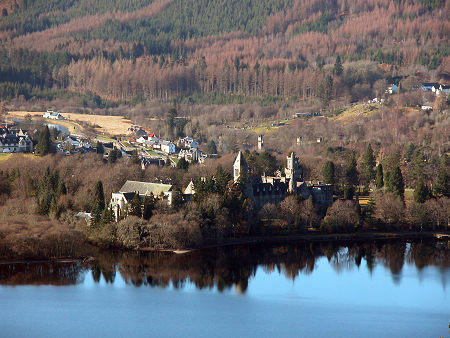The Caledonian Canal was built between 1805 and 1815 by a team led by James Watt, an engineer known for the steam engine. The Scottish government wanted the canal to improve communication and trade throughout the country. The engineers planned to build a system of locks that would allow ships to travel inland from the coast without being affected by the icy waters of north Scotland. This project would employ more than 3,000 men, many of whom were locals.

The canal was completed in the early nineteenth century and was the main shipping route for World War I. Although the canal was not a commercial success, it was very important to the Highlands. The first section of the Caledonian Canal was thirty-seven miles long, with 29 locks. It is 60 miles long and had five-hundred locks. It is the longest navigable waterway in the world, and has more locks than any other canal in the world.
The canal cost PS474,531, plus an additional PS15,000 for land purchases, and it was expected to take ten years to complete. The Canal also benefited local communities by providing jobs for unemployed men. It was criticized for not helping to reduce local unemployment, but it was completed despite many problems. The Caledonian Canal was opened in October 1822 and spent over 1.2 million pounds.

The Caledonian Canal was over budget by PS425,000, which is about PS14 million today. The cost of the canal was thought to be high, but its economic value proved to be too great to be ignored. The project manager Thomas Telford was appointed in 1803 and work began the following year. It was estimated that the canal would be finished in 1822. This canal was built in a time when unemployment was high and the economy was weakened.
The Caledonian Canal was built during the Industrial Age in Britain. It was built to create employment and make shipping more convenient. The canal is Scotland’s longest inland waterway, and it is accessible by car and train. The Great Glen is a 100-kilometer long valley where the canal is built. It was designed to be an alternative to the Pentland Firth, which is still the most popular route today.
The Caledonian Canal was built to remove the dangerous Pentland Firth passage, and it was estimated to cost PS165,000 in modern money. It was built on a fault in the Earth’s crust, and the cost of building the canal was later increased. The project was eventually finished in 1817 and was replaced by the southern mainline of the Highland Railway. The new railway route was more than twice as long as the old one, but was not as profitable as anticipated.
In addition to a long history, the Caledonian Canal is one of Scotland’s most famous canals. It was built in the 18th century and was a popular tourist destination. It was built with a budget of PS474,000 and was completed in 1822. It was a massive undertaking in the early nineteenth century, and it helped advance the field of canal engineering. The harsh climate and the abrasive ground conditions made it difficult to construct, but it was successful in achieving this goal.
In addition to being a tourist attraction, the Caledonian Canal was an economic stimulus in Scotland. It linked the North and Irish Seas and was a huge undertaking at the time. In the 19th century, the Caledonian Canal had many benefits for the people living in the area. With the canal, they were able to reach the lowlands and trade with the rest of the world. The area was booming and had a high population.
The Caledonian Canal was built between 1803 and 1847. It was the fastest route between Glasgow and Inverness before the railway reached it. This new system connected the North Atlantic Ocean with the North Sea and was a great advantage for sailing ships. In addition to this, it connected the Pentland Firth, which had long been a dangerous location for ships. In 1822, the Caledonian Canal opened for navigation.
